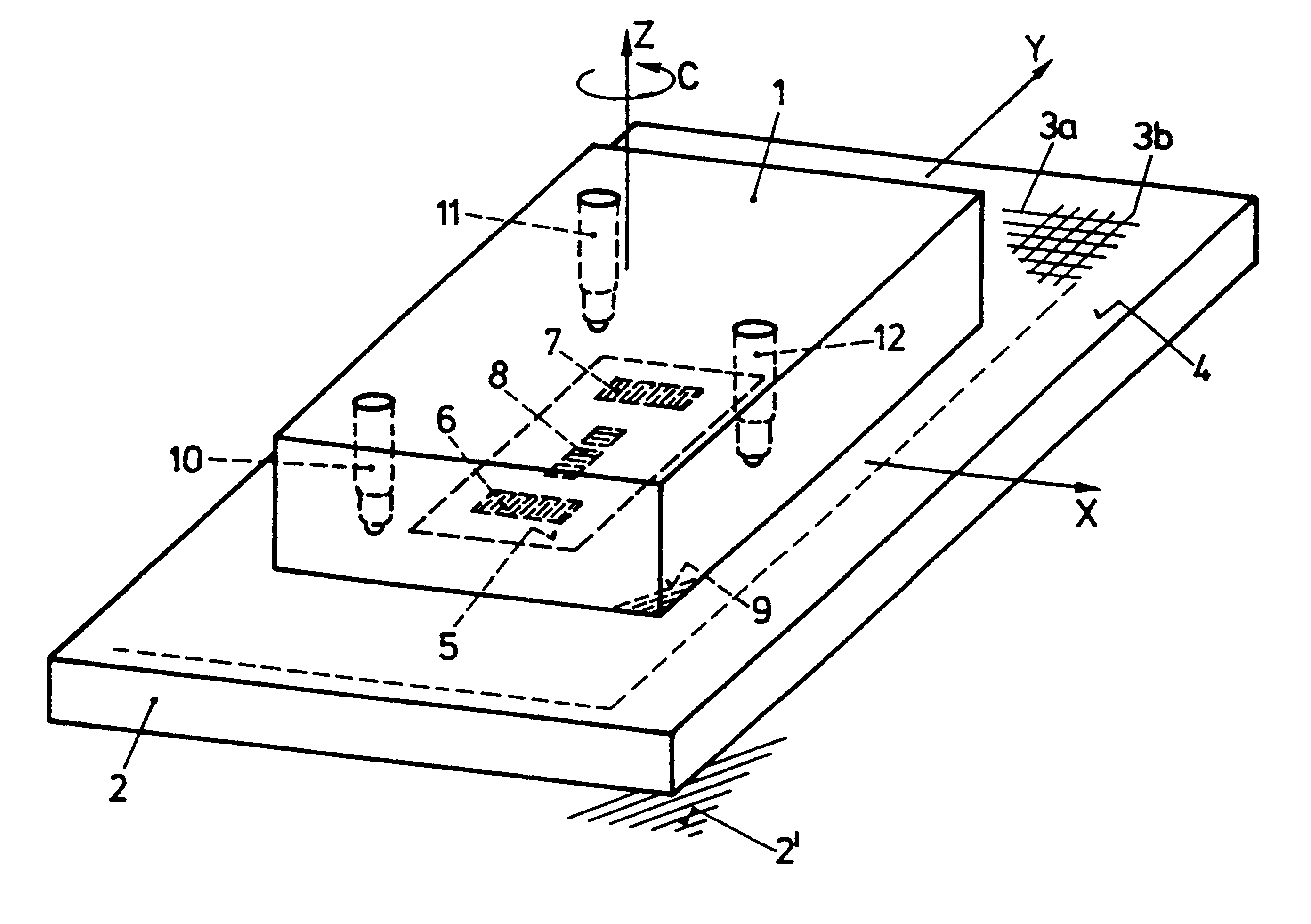Device for detecting the position of two bodies
a technology for detecting the position of two bodies and devices, applied in the direction of walking sticks, navigation instruments, instruments, etc., can solve the problems of not being able to detect all six possible motion components, restricted known devices, and moreover extraordinary structural complexity, etc., to achieve high resolution measurement, easy to carry out measurements, and high accuracy
- Summary
- Abstract
- Description
- Claims
- Application Information
AI Technical Summary
Benefits of technology
Problems solved by technology
Method used
Image
Examples
Embodiment Construction
A typical rigid body has six degrees of freedom: three translational motion components in the X, Y and Z axes, and three rotational degrees of freedom A, B and C. The position and orientation of a body are completely described by specifying the six degrees of freedom. By specifying the time characteristic of these six quantities, the motion of the body is defined completely. The arrangement of these degrees of freedom is shown in FIG. 1 on the basis of a coordinate system standardized according to ISO.
The detection of the relative position of a tool and a workpiece on machine tools or other automatic handling systems constitutes a central object of the metrology of a machine. A series of measuring instruments have been developed for this purpose. It is a characteristic of conventional devices that only sub-components of the relative motions can be detected. Generally it is not possible to detect all six degrees of freedom which describe the relative motion completely.
Consequently, t...
PUM
 Login to View More
Login to View More Abstract
Description
Claims
Application Information
 Login to View More
Login to View More - R&D
- Intellectual Property
- Life Sciences
- Materials
- Tech Scout
- Unparalleled Data Quality
- Higher Quality Content
- 60% Fewer Hallucinations
Browse by: Latest US Patents, China's latest patents, Technical Efficacy Thesaurus, Application Domain, Technology Topic, Popular Technical Reports.
© 2025 PatSnap. All rights reserved.Legal|Privacy policy|Modern Slavery Act Transparency Statement|Sitemap|About US| Contact US: help@patsnap.com



